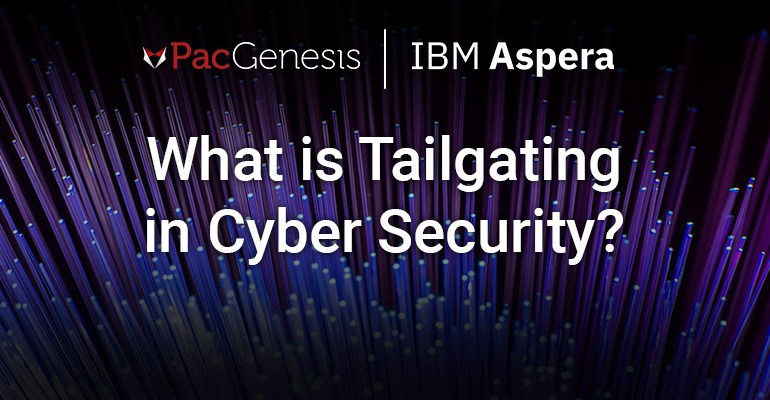What is Tailgating in Cyber Security?

What is Tailgating in Cyber Security?
Tailgating is a physical security breach that occurs when an unauthorized person follows an authorized employee into a restricted area—often without the employee even noticing. It’s a form of social engineering, exploiting human error and lack of awareness to bypass access control systems. This kind of attack can lead to major consequences, including data theft, system sabotage, or reputational harm. Fortunately, businesses can defend against tailgating by implementing stronger physical security policies, technologies like biometric authentication, and regular security awareness training.
Tailgating is a social engineering attack that hackers use to gain unauthorized access to password-protected or off-limits, software-protected physical locations. An attacker closely follows an authorized employee into a secured area—exploiting human error and lapses in security protocols.
Organizations at risk include:
- Companies with multiple unsecured entry points
- Businesses with high employee traffic across buildings
- Offices without strict access control systems or reception checks
Tailgating attackers often try to “blend in” by engaging employees in conversation or mimicking their behavior. They may wait for someone to open a door, then quickly slip inside—causing a physical security breach that can lead to data theft, sabotage, or reputational damage.
Tailgating vs. Piggybacking
Tailgating is sometimes confused with piggybacking, but there is a key difference:
- Tailgating happens when the authorized employee is unaware they’re being followed.
- Piggybacking occurs when the authorized person intentionally lets someone else through—either out of politeness or pressure—knowingly granting unauthorized access.
Both fall under the umbrella of social engineering and present serious risks to company security.
What Is an Example of Tailgating?
Let’s say a contractor shows up wearing a fake badge and carrying a coffee tray. They wait near a secure door and strike up friendly conversation with an employee walking in. As the employee swipes their badge and opens the door, the contractor quickly follows—impersonating a legitimate visitor. No one questions it.
In this case, the attacker bypassed access control measures without hacking any systems. The breach occurred because of human error, not a technical flaw. These situations highlight the importance of surveillance systems and proper security awareness training.
What Is Social Engineering in Cybersecurity?
Social engineering refers to manipulating people into compromising security measures. It leverages psychological tactics to trick employees into giving away sensitive data, granting access, or making unsafe decisions. These attacks happen online, in-person, or through phone calls and can be used for:
- Disrupting operations
- Gaining unauthorized access
- Spreading malware
- Stealing credentials or intellectual property
How to Prevent a Tailgating Attack
A robust anti-tailgating strategy includes:
- Staffed reception areas with badge check protocols
- Surveillance systems to monitor access points
- Biometric authentication for high-security areas
- Access control systems that log and verify all entries
- Frequent security awareness training for employees
Train employees to challenge unfamiliar individuals, never hold the door open for strangers, and immediately report suspicious activity.
Prevent Credential Sharing & Sprawl
One overlooked risk of tailgating? It often goes hand-in-hand with credential sprawl, where employees share login access or physical keys. Implement a least-privilege model and regularly audit access levels to minimize exposure.
Get Compliant with SOC 2
Tailgating attacks can threaten your ability to meet compliance requirements like SOC 2. Fortunately, tools and practices that prevent physical breaches also strengthen your compliance posture. PacGenesis offers prebuilt tools and templates to speed up your path to SOC 2 certification.
Protect Your Business from Cyber Criminals
Cybercrime is rising—and attackers aren’t just behind keyboards. They’re at your doors. Combine physical and cyber protections to secure your people, systems, and data.
PacGenesis provides:
- Infrastructure and software security tools
- Vulnerability testing and scanning
- Tailgating prevention training
- Strategic consulting on physical access risks
Partner with PacGenesis for Cyber Security Solutions
Protect your business by implementing cyber security measures. We help organizations prevent threats like tailgating, phishing, and ransomware with a modern mix of software and employee education. Contact us to explore how we can strengthen your physical and digital defenses.We are always staying up-to-date on the latest cutting-edge security solutions that help protect your business and employees. Contact us to find out what solutions best suit your company and its needs.
To learn more about PacGenesis, follow @PacGenesis on Facebook, Twitter, and LinkedIn, or visit us at pacgenesis.com.




